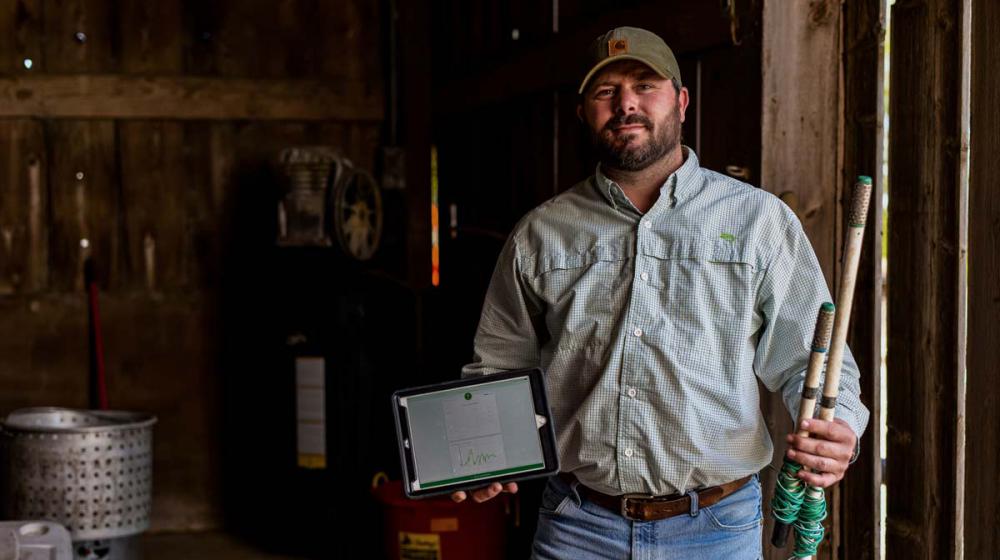Improving Profits

Brian Andrus, Sunflower County row-crop producer
Soil sensor program helps growers moderate irrigation
Story by Nathan Gregory • Photos by Kevin Hudson
Brian Andrus irrigated exactly zero times on his Sunflower County farm in 2021. He didn’t even turn on his well.
Why? Because, for the second consecutive growing season, Andrus had a soil moisture sensor system that was reporting to him how much water was in his heavy clay soil and whether it was enough to keep his 500 acres of row crops growing. He can monitor that data remotely at any time from his smartphone.
“Before the sensors, it seemed as if I was overwatering or watering too soon. On my soil type, that could be a disaster on some occasions because too much water can be just as harmful as not enough,” he says. “Now that I am familiar and confident in the sensors, I feel confident that I can hold off and wait for a rain and capture some of the free water from Mother Nature.”
The sensors were installed on his land in 2020 by Dr. Drew Gholson, an irrigation specialist with the Mississippi State University Extension Service, and Alex Deason, an MSU Extension agent in Sunflower County.
Based at the MSU Delta Research and Extension Center in Stoneville, Gholson is also an assistant professor and coordinator for the National Center for Alluvial Aquifer Research. In 2019, he replaced Dr. Jason Krutz, who became the director of the Mississippi Water Resources Research Institute. Before his departure, Krutz developed the Row-Crop Irrigation Science and Extension Research (RISER) program as a science-based approach to evaluating water management practices in the Mississippi Delta.
RISER is a side-by-side trial demonstration comparing a field irrigated by the participating grower and an Extension-managed field equipped with sensors, surge irrigation, and computerized hole selection. Gholson wanted to put RISER in the hands of growers to teach them how to implement the system themselves over a 3-year period.
Gholson’s program is in its third year with 33 demonstration sites on farms. To reach more growers, he first taught the system to Extension agents so they could install it on farms. The key to success, he says, is gaining the grower’s trust.
“Data from RISER shows the moisture systems could save water, maintain yields, and improve profits for our producers,” Gholson says. “One barrier in getting them to adopt this conservation practice wasn’t lack of interest but not knowing enough about how to do so. They would get a big pile of numbers they were supposed to use to make irrigation decisions.
“If it takes 3 years because they aren’t trusting the sensors yet, we work with them,” he adds.
“We’re willing to meet the growers where they are and work with them at their pace, because I want them to build trust in the sensors and know how to use them at the end of the program.” Andrus says the program takes replication to become familiar with.
“It is like getting a new cell phone. You may know its capabilities, but when it first arrives you may not know how to use all its functions,” he explains. “That is why, over time, you become more comfortable in understanding what the sensors are telling you and use it as a decision aid on the farm.”
Deason is one of the agents delivering the program to clients.
“We’ve got a few guys in this program that have hit home runs, and Brian is one of them,” Deason emphasizes. “In year 2, the growers have more buy-in and are gaining enough experience to make decisions themselves, but his confidence really skyrocketed.”
Andrus says Gholson and Deason have provided him with the tools and technology needed to make his farm more efficient and profitable.
“Extension agriculture specialists like them are very important in not only helping improve yields and profits in our state, but also helping to conserve our water source for future farmers to have available,” he says. “By doing so, it helps keep the water table up, and that, in turn, allows us to continue irrigation practices when our crops need it for years to come.”


